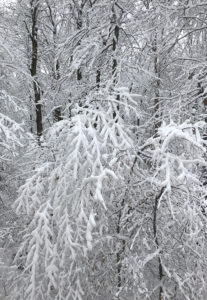 Late Autumn may bring to mind the crunch of fallen leaves underfoot and Thanksgiving meals with family, but it’s actually the ideal season to protect your church building against damage from snow, ice, and freezing temperatures if you haven’t already. Though still nearly a month away, winter’s wrath has already been felt in many parts of the country. Knowing what to do to prepare your facilities, and when to do it, will mean your church can avoid losses. Here’s a guide to maintaining the inside and outside of your building during the winter.
Late Autumn may bring to mind the crunch of fallen leaves underfoot and Thanksgiving meals with family, but it’s actually the ideal season to protect your church building against damage from snow, ice, and freezing temperatures if you haven’t already. Though still nearly a month away, winter’s wrath has already been felt in many parts of the country. Knowing what to do to prepare your facilities, and when to do it, will mean your church can avoid losses. Here’s a guide to maintaining the inside and outside of your building during the winter.
Heating System
- Leave it to the professionals. For proper operation, your heating system should be inspected and serviced by a licensed heating contractor that has experience working with your kind of system.
- Follow instructions. Check furnace filters every month and replace them every three months, or according to the manufacturer’s recommendation.
- Stay back. Keep combustible material at least 36 inches (91 centimeters) from heating units, and never store items like gasoline or paint thinner in the same room as your heating unit.
Frozen Pipes
- Be in the know. All church administrators or, at the very least, the minister, church secretary, janitor, and property chair should know the location of the main water shut off valve in your building. If a leak or pipe burst takes place, an easily accessible valve will reduce water damage.
- Wrap it up. Wrap any water pipes that are exposed to freezing temperatures and cold drafts, and those located in unheated or non-insulated areas, with pipe insulation.
- Cover up. Close windows near water pipes and cover open-air vents. Freezing temperatures and wind drafts can cause pipes to freeze at a higher rate than during warmer weather.
- Be prepared. If your building has any faucets outside or a lawn-irrigation system, ensure that those water pipes are drained and disconnected from any hoses before the winter freeze arrives. DCEF Top Tip #1: Ask for help. Lawn irrigation systems should be winterized by specialists, who will use pressurized air to blow the water from the pipes.
- Take it slow. When the temperatures drop really low, turn interior faucets to a slow drip. This will reduce the chance of the pipe freezing. DCEF Top Tip #2: See the bullet point above. If a pipe freezes or bursts, get in touch with a licensed plumbing contractor ASAP!
Roof and Gutters
- Keep your eyes peeled. Examine your roofing system to search for cracking, blistering, cupping, peeling, or loss of granulation in asphalt shingles.
- Pay attention. Take a look at drains, gutters, and valleys to make sure that no leaves, twigs, and other debris has built up that can get in the way of water properly draining off of the roof.
- Check it out. Check downspouts for debris and ensure roof runoff is led away from the building’s foundation.
- Don’t wait until the last minute. During the Fall, prune trees close to your building. This will keep branches from rubbing on your roofing surface or falling onto the building.
Ice Dam Prevention
- Bundle up. Ensure the attic has sufficient insulation and ventilation. Rust spots, rusty nails, or the smell of mildew could point to inadequate ventilation. DCEF Top Tip #3: Let in some air. Install soffit vents to provide more ventilation.
- Seal the hatches. Seal any openings in the attic, like heat ducts, light fixtures, and vent pipes.
- Clear it out. Using a snow rake, clear snow two to three feet from all roof edges. DCEF Top Tip #4: Be safe. Think about hiring a qualified and insured contractor to carry out this work. Getting rid of snow and ice from roofs can be dangerous and can damage existing roofing components!
Bushes and Shrubs
- Get a haircut… for your plants. Prune plantings close to your building; winter is difficult for them as the snow and ice add weight to their branches and limbs. Don’t forget to ensure that the branches and limbs can’t hit the building’s walls!
- DCEF Top Tip #5: Clean up. Remove anything under the branches and limbs that might be appealing to rodents.
Parking Lots and Walkways
- Fill ‘er up. Have the cracks filled and the surface resealed on your asphalt lot. Wintertime isn’t only hard on human beings, but on our parking lots and sidewalks as well. While we lather on hand and body lotion to seal in moisture, our asphalt lots actually need to have moisture sealed out. Fill cracks and reseal surfaces in the Fall. This should be done every three to five years.
- Be kind. Walkways endure a lot during winter, and not just from Mother Nature. Even though property owners and caretakers use de-icing products to prevent people from slipping and falling, their good intentions aren’t always the best for concrete surfaces. When spreading ice melt, more product isn’t what your hardscapes need! Ice melt is designed so that you don’t need a lot of it. In fact, spreading out too much is inefficient. Packing it on doesn’t help either, as that’s harmful to the wearing surface of your concrete and quickly causes it to corrode. Use ice melt according to the manufacturer’s instructions.
If you find something that needs a little more attention, contact us.
